SOLAR SYSTEM
Our Solar System is the gravitationally bound system of the Sun and the objects that orbit it.
It formed about 4.6 billion years ago when a dense region of a molecular cloud collapsed,
forming the Sun and EVENTYUALLY THE PLANETS AND ALL OF US.
SIZE / DISTANCE
The solar system's closest object is the Moon averages 238,855 miles away - about 30 Earth diameters. It's 2,159 miles wide.
The Sun averages 93,000,000 miles away. It's 864,600 miles wide - 109 times wider than Earth, which is 7,918 miles wide.
EQUIPMENT USED
The equipment used and the exposure times vary substantially from object to object, and are very different than when imaging nebula.
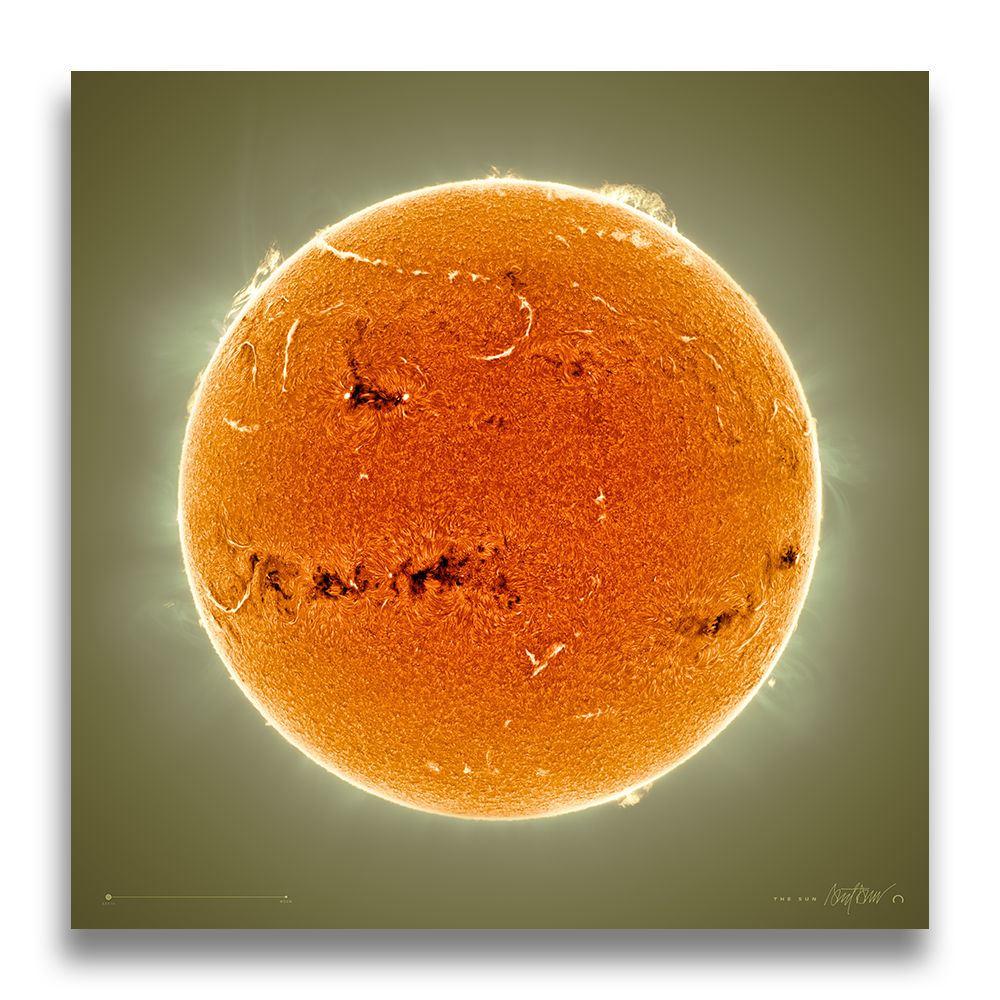
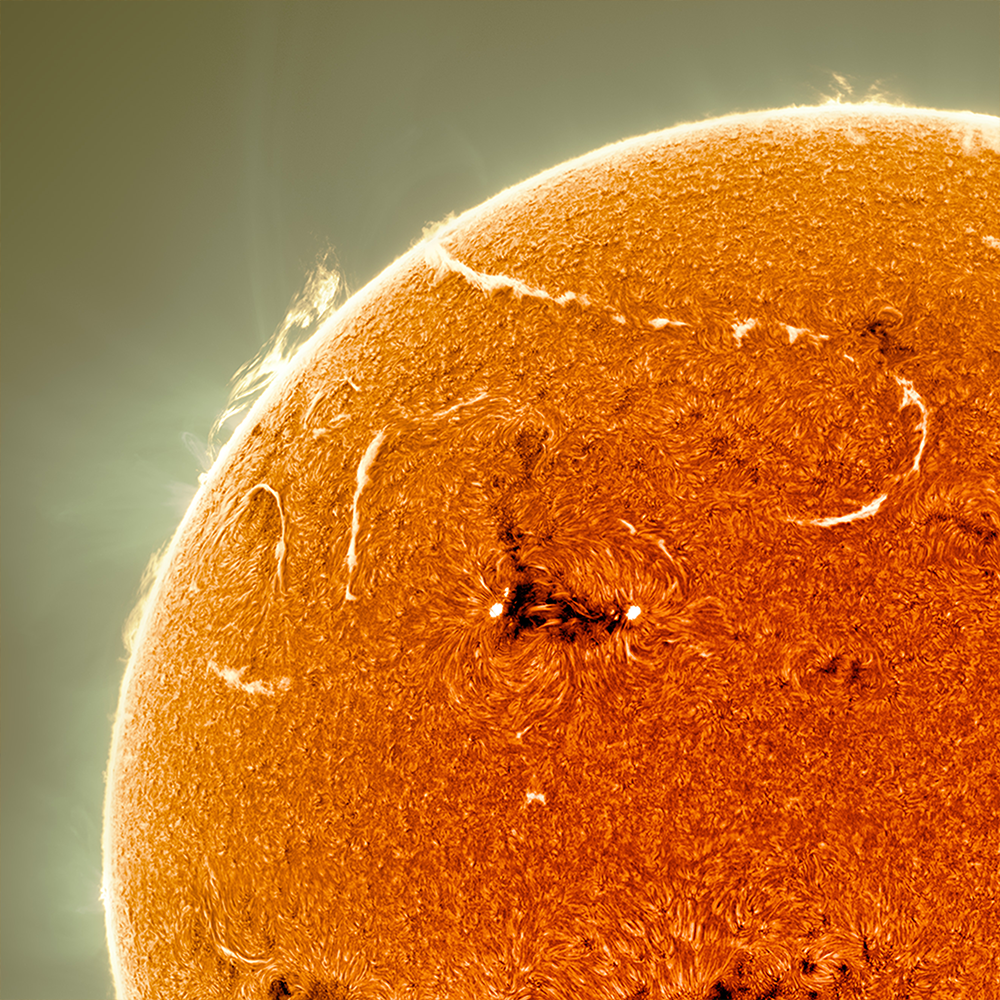
THE SUN
In junior high school, my science project about sunspots, using a small 3" refractor telescope I received as a Christmas gift. My project, titled "Do Sunspots Affect the Weather?", earned an award from the National Weather Service—a moment that sparked my lifelong fascination with the Sun.
Forty years later, with much more advanced equipment, I captured this mosaic image of the Sun, made from 28 individual frames. My solar-dedicated telescope setup utilizes an electronically adjustable Hydrogen Alpha filter, allowing me to alternate between seeing details of solar prominences (flares) or the chromosphere (the Sun’s surface). The two are later combined into a single image.
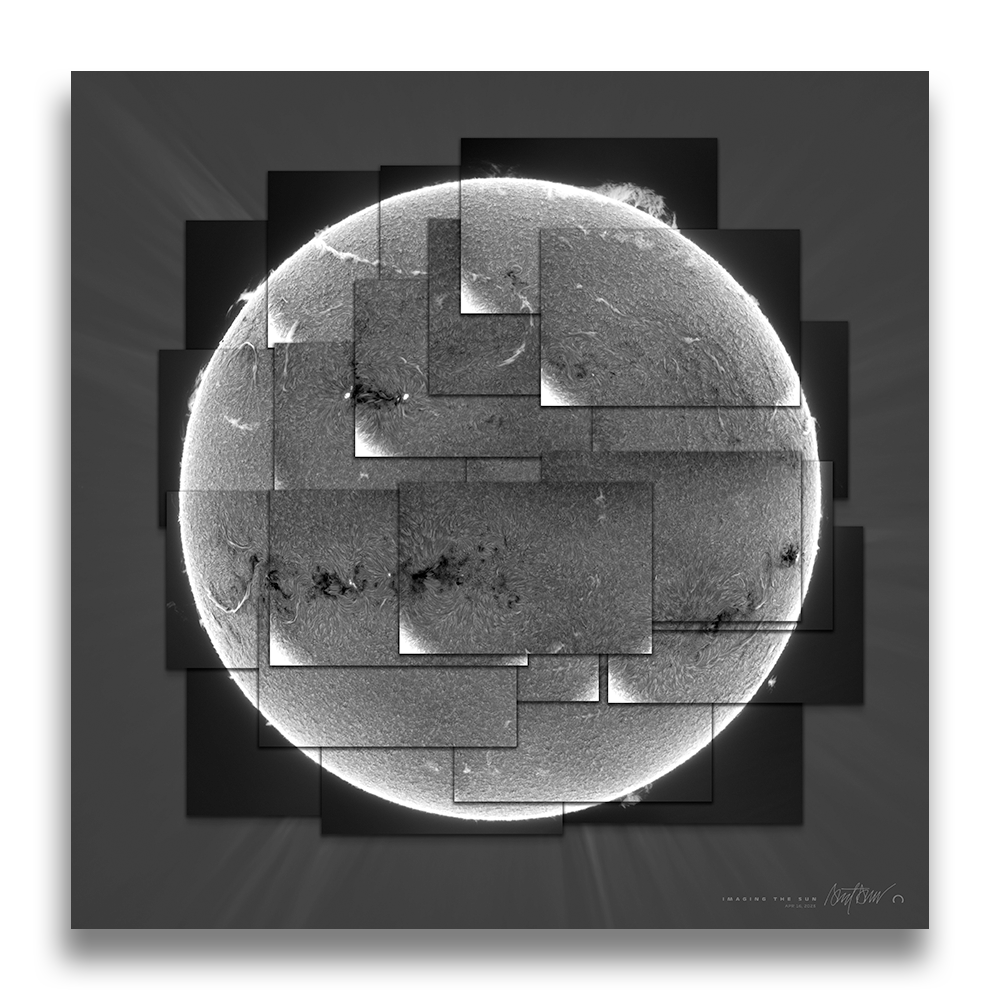
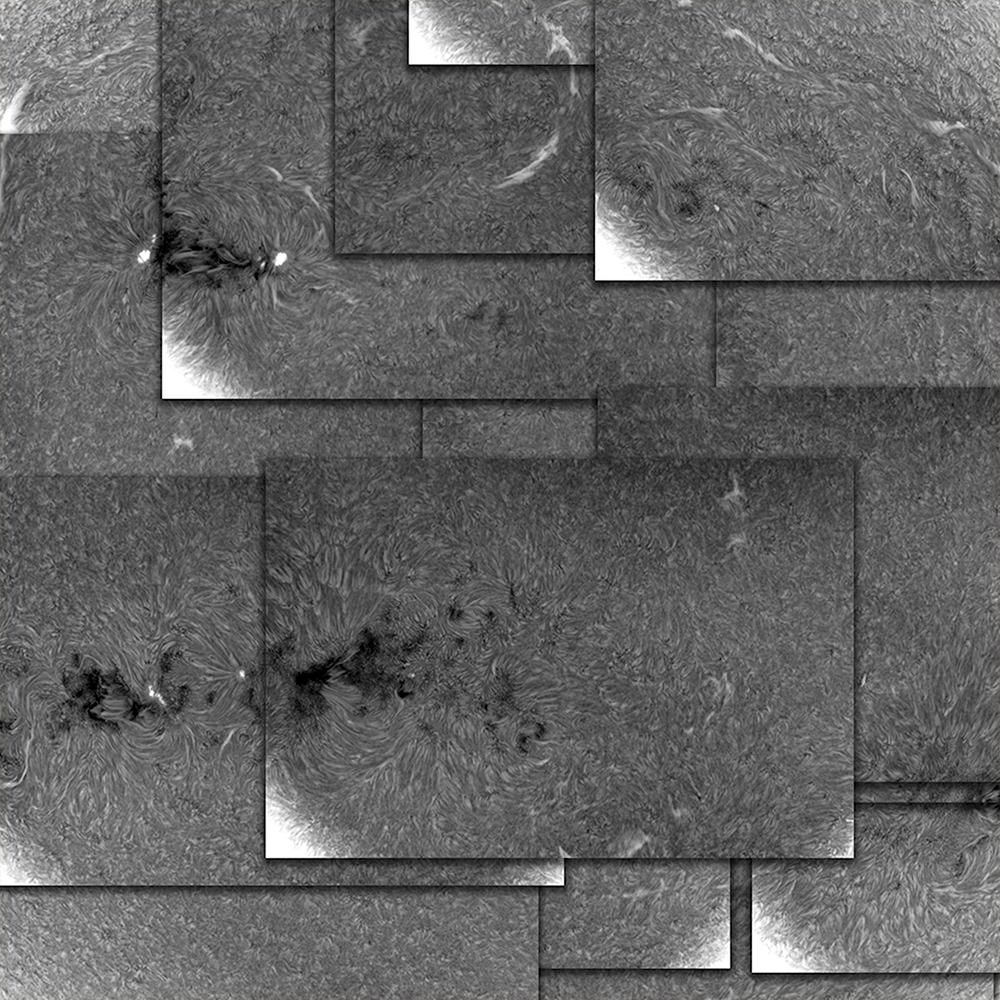
IMAGING THE SUN
This mosaic was created from 28 separate images that together formed the final Sun image shown above. In total, I captured 56,000 frames, taken in sets of 2,000. Only the sharpest 1% of those frames were selected for use.
Each selected set was stacked using Autostakkert, sharpened with ImPPG, and then carefully merged into a single final image in Photoshop, where color was added to bring the Sun’s dynamic features to life.
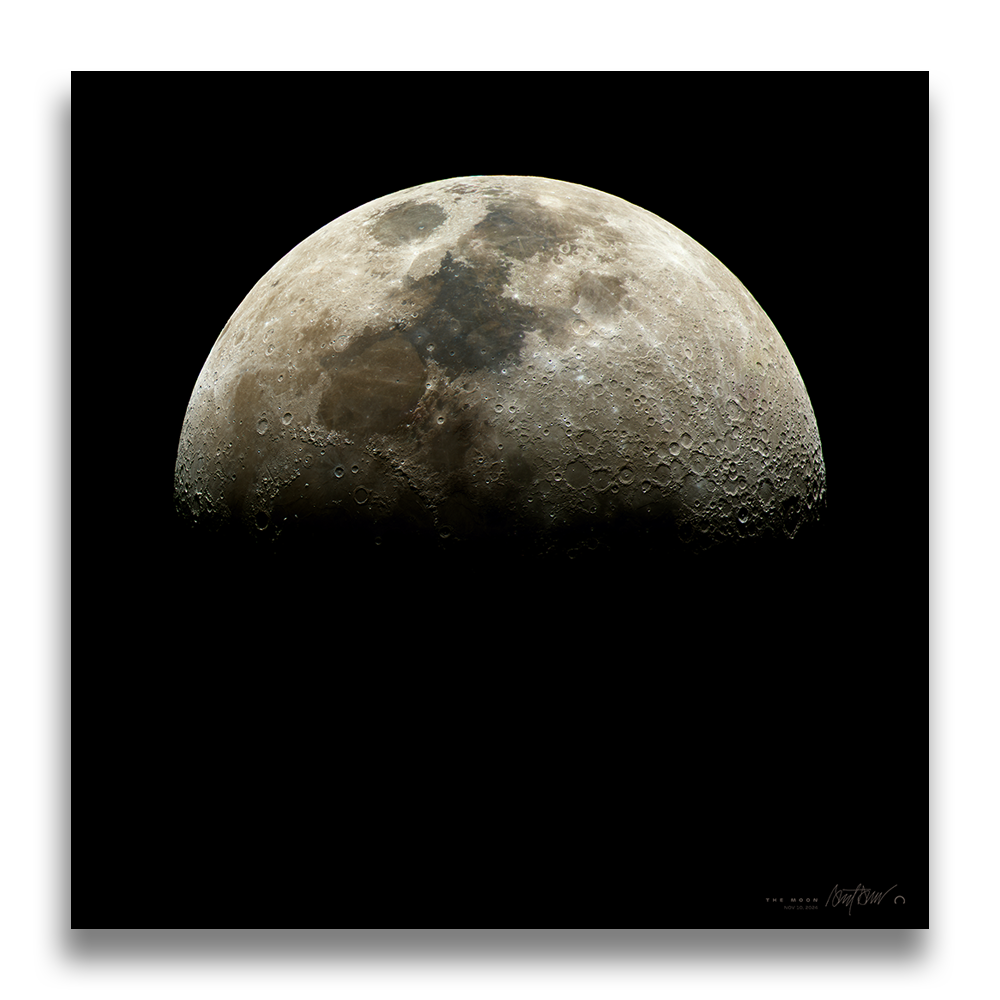
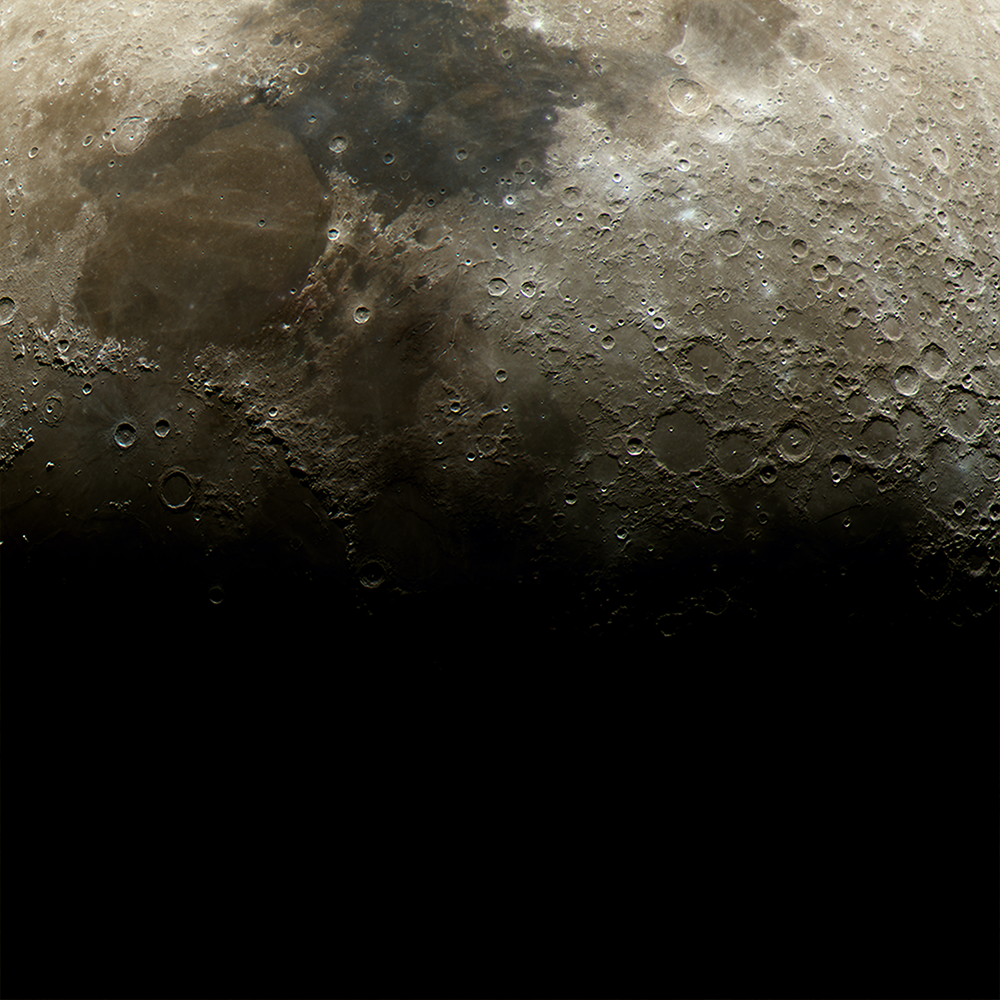
THE MOON
NOV 10, 2024
The Moon.

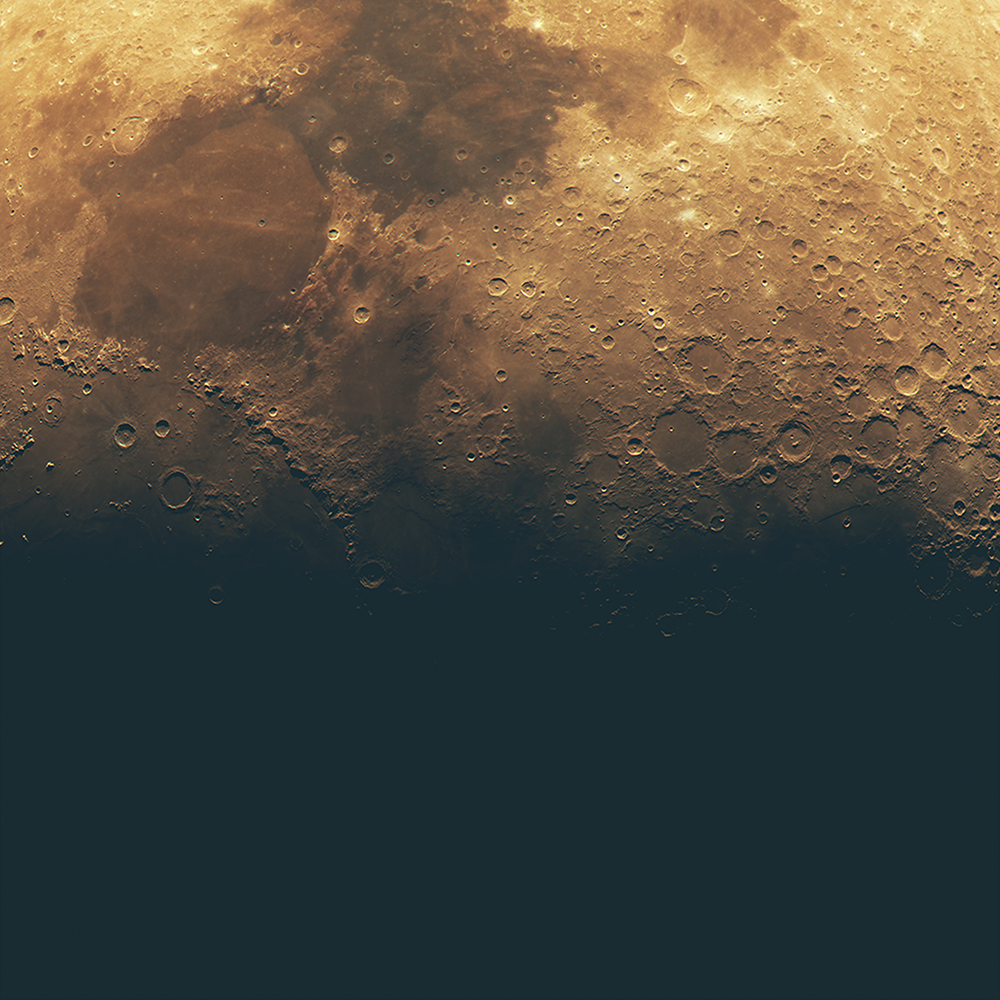
THE MOON AT SUNSET
NOV 10, 2024
The Moon. with evening lighting.
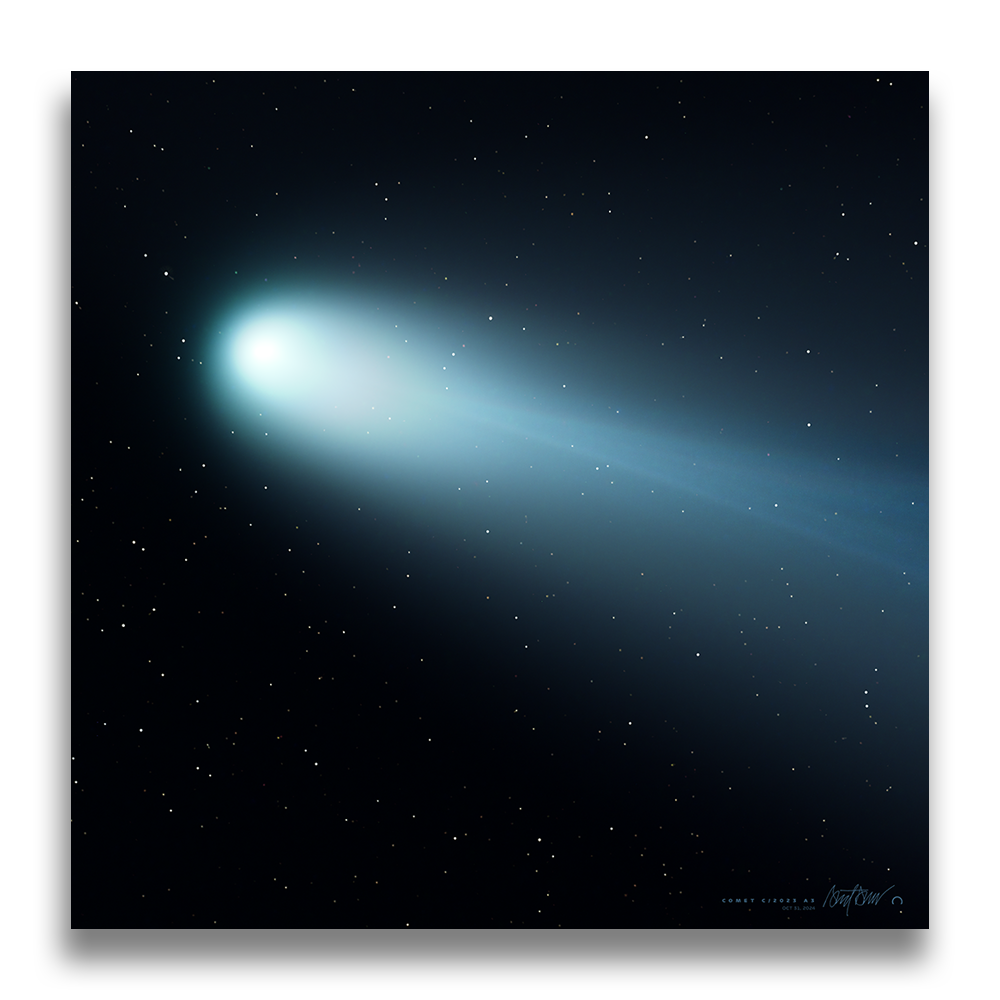
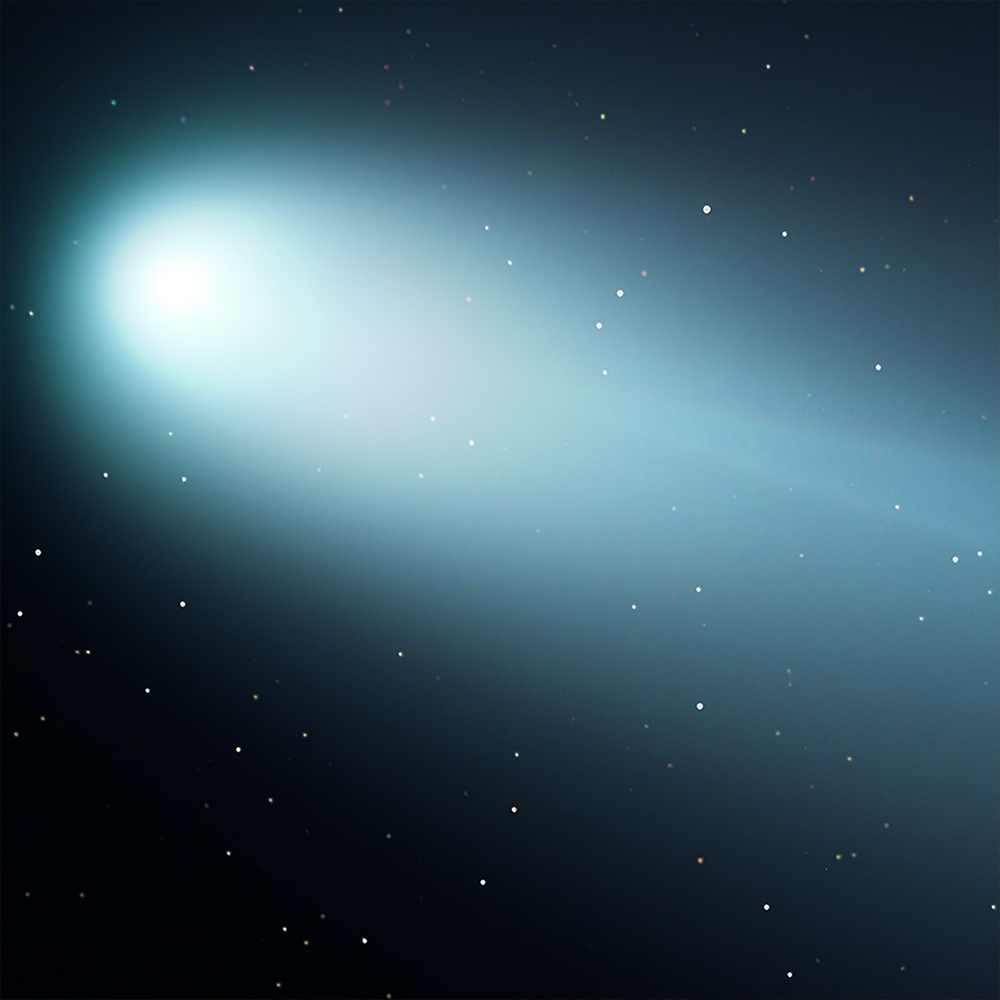
COMET C/2023 A3
AKA: Tsuchinshan-ATLAS
OCT 31, 2024
IMAGE 1 OF 2: Narrow field of view using a 11" telescope.
Comets present significant challenges for imaging. When they are at their closest proximity to Earth, they are also in close vicinity to the sun, resulting in their setting shortly after sunset. Their rapid movement means they are only within optimal imaging distance for approximately one to two weeks.
In the case of this particular comet, clouds obscured the view on most evenings. On a few clear nights, the comet became visible as the sky darkened, albeit it low on the horizon. The screen walls surrounding my observatory obstruct the lower 18 degrees of the sky, thus providing a very limited window for imaging.
Nevertheless, I managed to capture some images using R, G, and B filters during this brief period. These represent the most detailed images of a comet I have achieved to date.
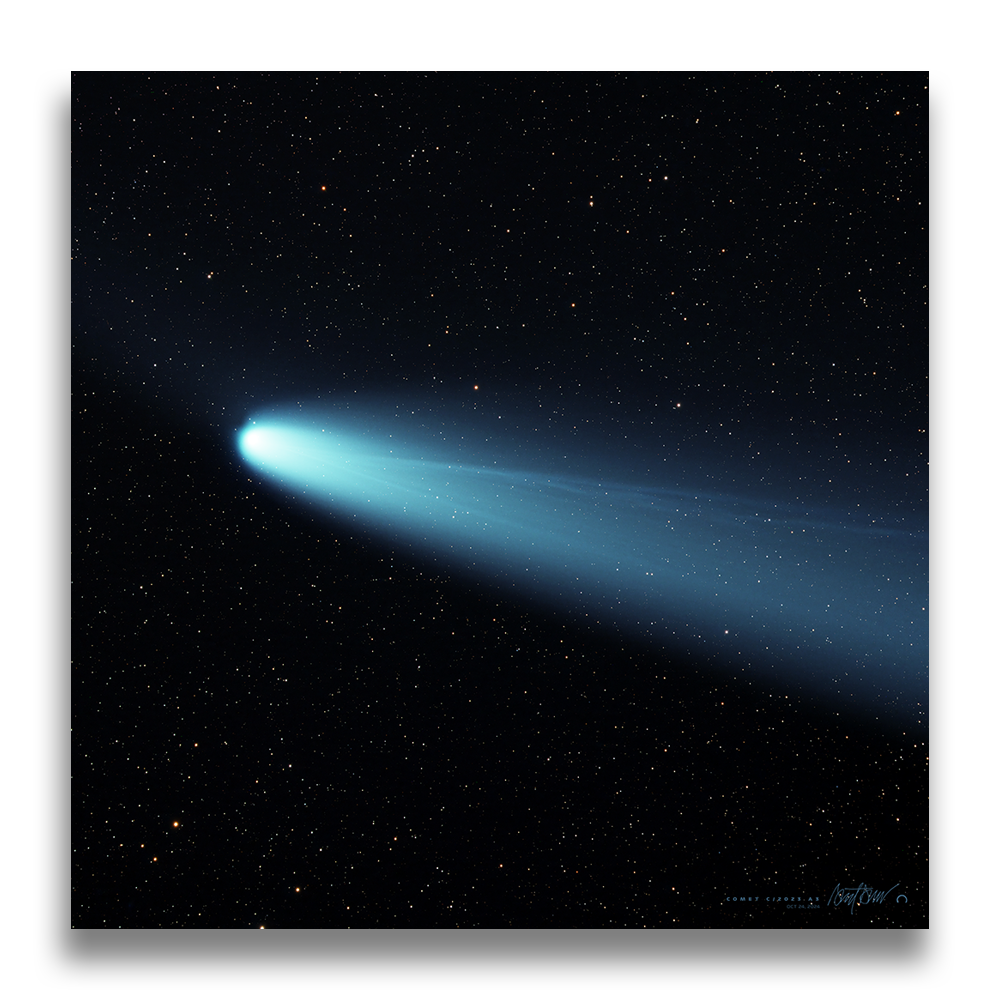
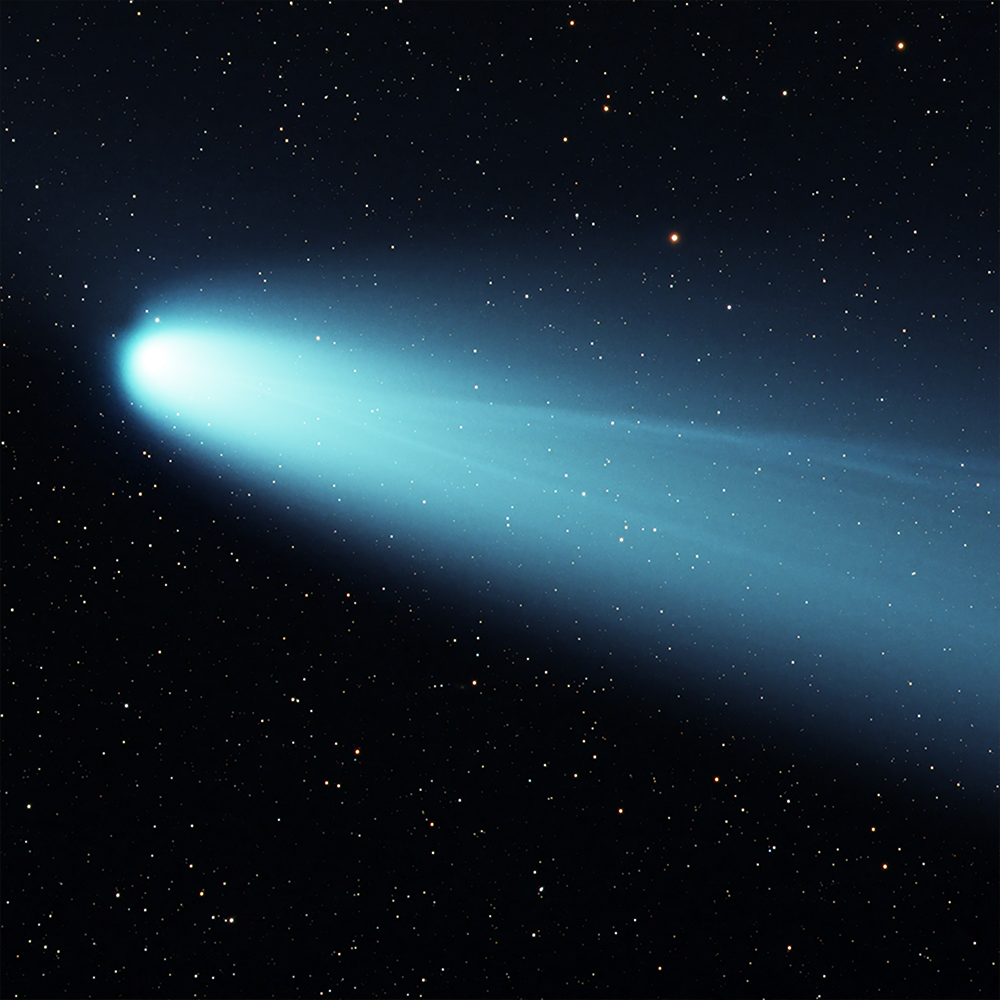
COMET C/2023 A3
AKA: Tsuchinshan-ATLAS
OCT 24, 2024
IMAGE 2 OF 2: Wider field of view using a 120mm telescope.
Comets present significant challenges for imaging. When they are at their closest proximity to Earth, they are also in close vicinity to the sun, resulting in their setting shortly after sunset. Their rapid movement means they are only within optimal imaging distance for approximately one to two weeks.
In the case of this particular comet, clouds obscured the view on most evenings. On a few clear nights, the comet became visible as the sky darkened, albeit it low on the horizon. The screen walls surrounding my observatory obstruct the lower 18 degrees of the sky, thus providing a very limited window for imaging.
Nevertheless, I managed to capture some images using R, G, and B filters during this brief period. These represent the most detailed images of a comet I have achieved to date.


